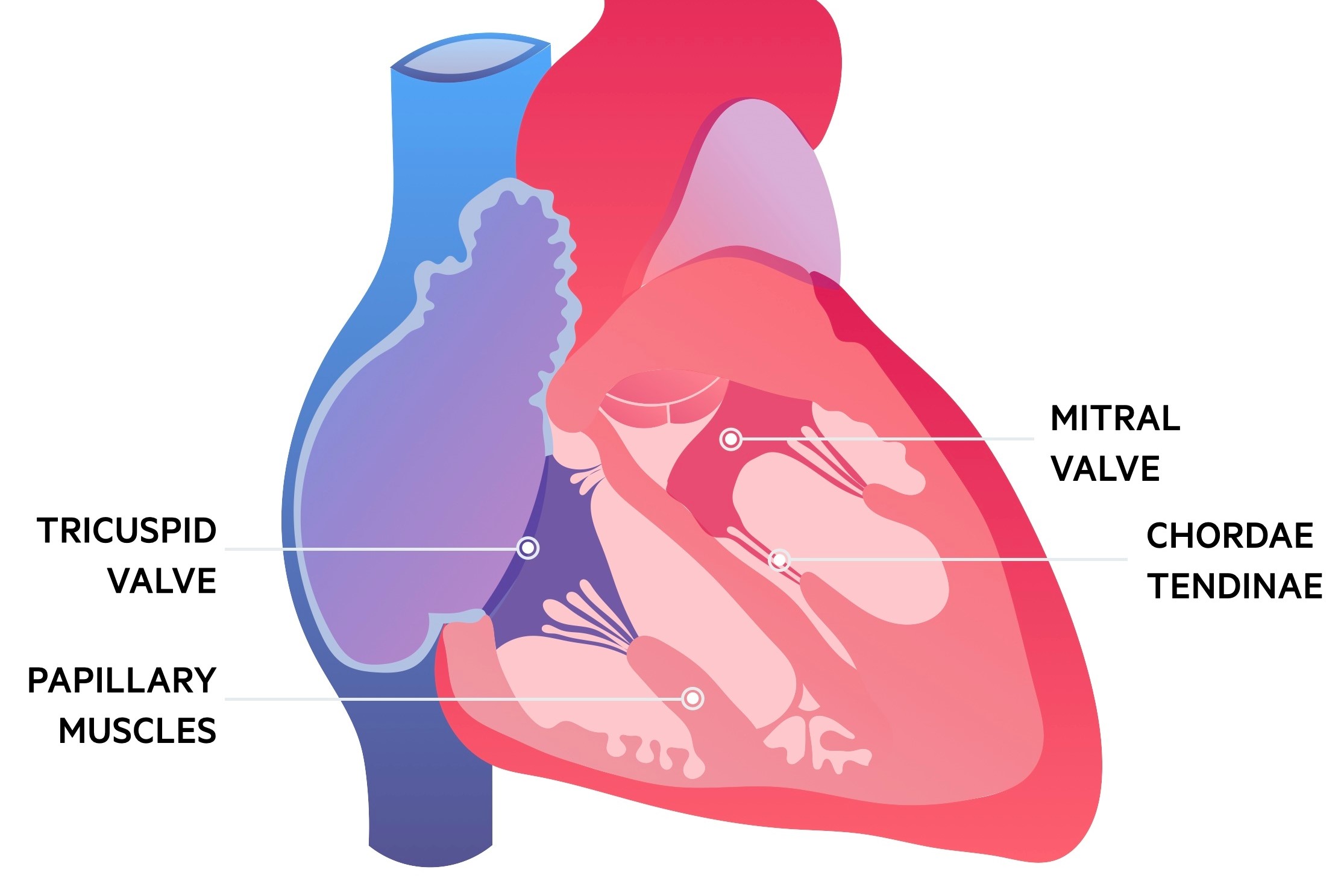
Mitral insufficiency: what it is and how to treat it
Mitral insufficiency is a heart disease affecting the mitral valve, one of the 4 valves of the heart
We take a closer look at what this disease consists of, what symptoms it has, how it is treated and, in the case of surgery, what the advantages of minimally invasive repair surgery are.
What mitral insufficiency is
Mitral insufficiency is the incomplete closure of the mitral valve, which leads to regurgitation of blood in the left atrium with stagnation in the pulmonary circulation, causing fatigue and respiratory disorders.
The occurrence of mitral insufficiency is widespread and increasing, especially degenerative mitral insufficiency, due to the ageing population.
Recent statistics estimate that mitral valve prolapse occurs in about 3% of the general population, while it is 6-9% in older age groups.
Of these patients, a large proportion may experience significant mitral insufficiency, requiring corrective treatment.
The role of the mitral valve
In a healthy heart, the mitral valve is made up of 2 movable leaflets (anterior and posterior) held in place by the chordae tendineae, the latter located on the papillary muscles of the left ventricle and arranged in a fan shape on the edge of the leaflets.
The valve, located in the left atrioventricular orifice of the heart, connects the left atrium with the left ventricle, allowing the passage of blood from one to the other during ventricular diastole and preventing the reflux of blood into the left atrium during systole.
Its proper functioning, ensuring normal work of the left ventricle, is crucial for survival.
Mitral Valve Problems
Pathological changes in the valve can be of 2 types:
- closure deficit (mitral insufficiency): the valve does not close perfectly, causing regurgitation of blood into the left atrium, resulting in increased pulmonary pressure and breathing difficulties;
- narrowing (mitral stenosis): the valve opens incompletely, causing reduced blood flow from the left atrium to the left ventricle, resulting in increased pulmonary pressure.
Symptoms of mitral insufficiency
The symptoms of mitral insufficiency depend on the severity and speed of onset and progression of the pathological condition.
They may include:
- shortness of breath (especially during physical activity or when lying down);
- fatigue;
- coughing (especially at night or when lying down);
- palpitations;
- swollen feet and ankles;
- syncopes;
- chest pain.
Diagnosis
In the presence of symptoms or suspected mitral insufficiency, the physician can assess the condition of the valve through cardiac auscultation, which, in the case of mitral insufficiency, allows the detection of a characteristic systolic murmur.
The most widely used and accurate diagnostic test for these pathologies is the transthoracic and transesophageal echocardiogram.
How mitral insufficiency is treated
The treatment of mitral insufficiency depends on severity, symptoms and the presence or absence of signs of left heart dysfunction:
- in the case of mild to moderate disease, one can limit oneself to periodic clinical and echocardiographic checks and eventual medical therapy;
- in the presence of severe pathology, on the other hand, surgery consisting of repair/replacement of the mitral valve is indicated.
Repair surgery in cases of severe mitral insufficiency
In the case of severe degenerative insufficiency, such as in prolapse, repair surgery, or valve plastic surgery, is ideal and superior to replacement with a prosthesis.
Indeed, repair is not subject to the complications associated with lifelong anticoagulant therapy (necessary for mechanical prostheses) or the degeneration of bio-prostheses, which occurs between 10 and 15 years after implantation.
Mitral plastic surgery is defined as an operation to repair and restore the valve to its normal structure and function.
It is proven to be the best possible intervention in specialised centres.
The advantages of repair over replacement have been known for over 30 years:
- Lower operative risk;
- Lower risk of recurrence in the future;
- Total resumption of physical and sports activities by the patient (with rare exceptions);
Greater freedom from thromboembolic and haemorrhagic events.
Read Also:
Emergency Live Even More…Live: Download The New Free App Of Your Newspaper For IOS And Android
Mitral Valve Prolapse: Symptoms, Causes And Complications
Defibrillator: What It Is, How It Works, Price, Voltage, Manual And External
The Patient’s ECG: How To Read An Electrocardiogram In A Simple Way
Signs And Symptoms Of Sudden Cardiac Arrest: How To Tell If Someone Needs CPR
Mitral Valve Diseases, Causes And Symptoms
Heart Patients And Heat: Cardiologist’s Advice For A Safe Summer
Mitral Valve Diseases, The Advantages Of Mitral Valve Repair Surgery
COVID-19 Infections Increase Risk Of Heart Conditions Up To A Year Later
Inflammations Of The Heart: Myocarditis, Infective Endocarditis And Pericarditis
Quickly Finding – And Treating – The Cause Of A Stroke May Prevent More: New Guidelines
Atrial Fibrillation: Symptoms To Watch Out For
Wolff-Parkinson-White Syndrome: What It Is And How To Treat It
Do You Have Episodes Of Sudden Tachycardia? You May Suffer From Wolff-Parkinson-White Syndrome (WPW)
Transient Tachypnoea Of The Newborn: Overview Of Neonatal Wet Lung Syndrome
Tachycardia: Is There A Risk Of Arrhythmia? What Differences Exist Between The Two?
Mild, Moderate, Severe Mitral Valve Insufficiency: Symptoms, Diagnosis And Treatment


